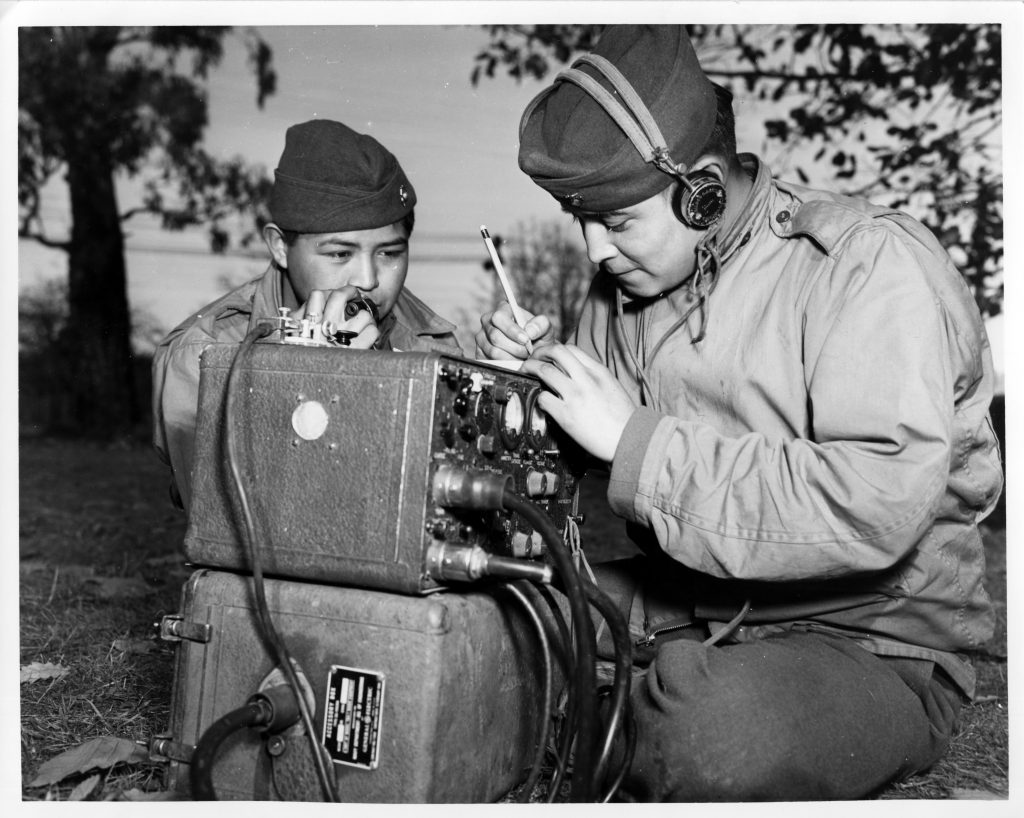Thursday, May 16, 2024
Code Talkers and Code Breakers
We're about halfway through the 2024 National Speech - Language - Hearing Month, and many of us are concerned now with safety and security. Worms in our brains! Tents on our campuses! Those books in our libraries! Those scoundrels holding public offices!! Much of this tumult in our lives is the product of miscommunication. Plainly, simply, comprehensively. The Native Code Talkers made miscommunication a battle tactic during World War II, by transmitting messages in their first languages that were opaque - untranslatable - to all but the most ingenious spies and well - equipped receivers who were listening. The converse of this perspective; that is, effective communication, relies upon how you construct and transmit your messages to be easily understood by your audience.
For example, healthcare systems have been for years among the biggest targets of cyberattacks by malicious persons. The rapid digital communication systems to which we've all become accustomed, whether for obtaining laboratory results, setting appointments at your physician's clinic, or reviewing and addending your electronic medical chart - that's short-circuited by a cyberattack. When the information required to keep a large organization, such as a medical center, a community of disparate individuals or the human body itself, is prevented from flowing to the places it's needed, the function of your organization breaks down, goes kerflooey and is a shadow of what's expected. As hospitals who are almost paralyzed by the hijacking of their information systems must resort to paper and face - to - face interactions, individual and group communication must compensate so that messages get through and the organization can function.
Speech - language pathologists are agents of organization, for anyone who has a problem communicating their needs, sharing information, maintaining social closeness or following conversational etiquette. In the 2023 ASHA Healthcare Survey, 80% of speech - language pathologists doing home health care reported that persons with language and communication problems were among the top five diagnoses in their caseloads. As we have with two prior diagnostic groups, we will break down impairments of language and communication. For example, the outcomes most persons with these disorders ask for, is for an improvement of their "communicative competence" (the four parameters in bold print, at the beginning of this paragraph). A person who has control of all these parameters has stability, like the four walls and ceiling of a modern home. For persons who have impairments of oral language use and have less functional independence in their communities, one successful outcome would entail increasing that function.
What tools are often used in evaluation and treatment of language and communication impairments? From the Bell and Howell Language Master, an almost archeological relic of World War II, language and communication therapy can now be contained in a tablet computer, e.g. the iPad. A commercially - available tablet loaded with commercially - available speech output software, offers now the advantages of a dedicated, customized speech generating device that might cost 5 - 6 times as much. The dominance of the smartphone in most of our lives, gives the communicatively impaired person access to multiple apps and avenues to communicate in everyday life.
A speech - language pathologist might use terms like aphasia - the impairment of language symbol usage - or anomia, that describes problems in finding the exact word you want to say. Taking turns: still another term, to indicate that communication is a transactional experience. You do something to get something, and even though one person in the transaction may not play the communication game the sa.e way - you interact. The strength of your interaction determines if your message is hard to understand (opaque), vague (translucent), or clear (transparent).
When There Is No SLP: Let your patient's family or caregiver help "translate" messages that you cannot: "when she does THIS, she means THAT". Communicate naturally when you are providing directions. Demonstrate what you want your patient to do or say, as necessary for each situation.
On this Date in History: Dr. Eric White loved enforcing rules behind the Americans with Disabilities Act, as a physician with his local health department in the early 1990's. One of his most favorite enforcement jobs was dropping in on fast - food restaurants, and attempting to order food from the pictorial menu. However, Dr. White saw the dilemna that many nonspeaking people can face. He was a picky eater, and when - for example - he might attempt to order a "Big Mac" as a nonspeaker who wanted the sandwich, he could not get across to the staff, that he didn't want special sauce; also, he wanted not two patties but one; he also wanted NO SESAME SEEDS, DARN IT!
WHo Does the Communicating in Your Neighborhood?
* The Pritzer Architecture Prize lecture, Illinois Institute of Technology, 5/16, Chicago
* Faulkner and Yoknapatawpha conference, July 21 - 25, Oxford, MS
A Note: Supported conversation strategies allow clinicians to work with patients with communication breakdowns e.g. stroke victims, so that the patients might use all their capacity to communicate. Information on Supported Conversation for Adults with Aphasia can be found at the Aphasia Insititue website: https://www.aphasia.ca/health-care-providers/
Something You Can Use: THe "Picnic" scene from the Western Aphasia Battery, or "Cookie Theft" from the Boston Diagnostic Aphasia Examination, are both black - and - white illustrations, that allow you a quick method to look at the patient's verbal expression skills.
Are we clear? See you next week, for part four of the review for National Speech - Language - Hearing Month.
Subscribe to:
Post Comments (Atom)









No comments:
Post a Comment